|
|

A Personal and Informal Auto-Biographical Photo Gallery (Dated 2003)
My parents were the kindest folks you could ever meet and devout German Lutherans who struggled all of their years
just "to make ends meet." I was born in Manhattan and lived there for the first ten years of my life. I remember that I loved to play stickball and curbball.
Due to changes in my father's employment, we moved to New Jersey, Ohio, and then, in 1969, to Germany. It was in 1970 that, as an American kid living in Germany, I had an encounter with The Yoga Sutras of Patanjali which first sparked my interest in meditation.
I soon was reading about the life of the sage of Arunachala, Ramana Maharshi and attending retreats with his students in Germany and Switzerland. Then I came across Tibetan Yoga and Secret Doctrines
and the instructions of Padma Karpo and decided to adopt them as a guide for meditation practice. This has served as a key practice manual for most of my years. To this day I still wonder, "What makes a 14-year old make up his mind to leave home and one day travel to India to meet its yogis?"
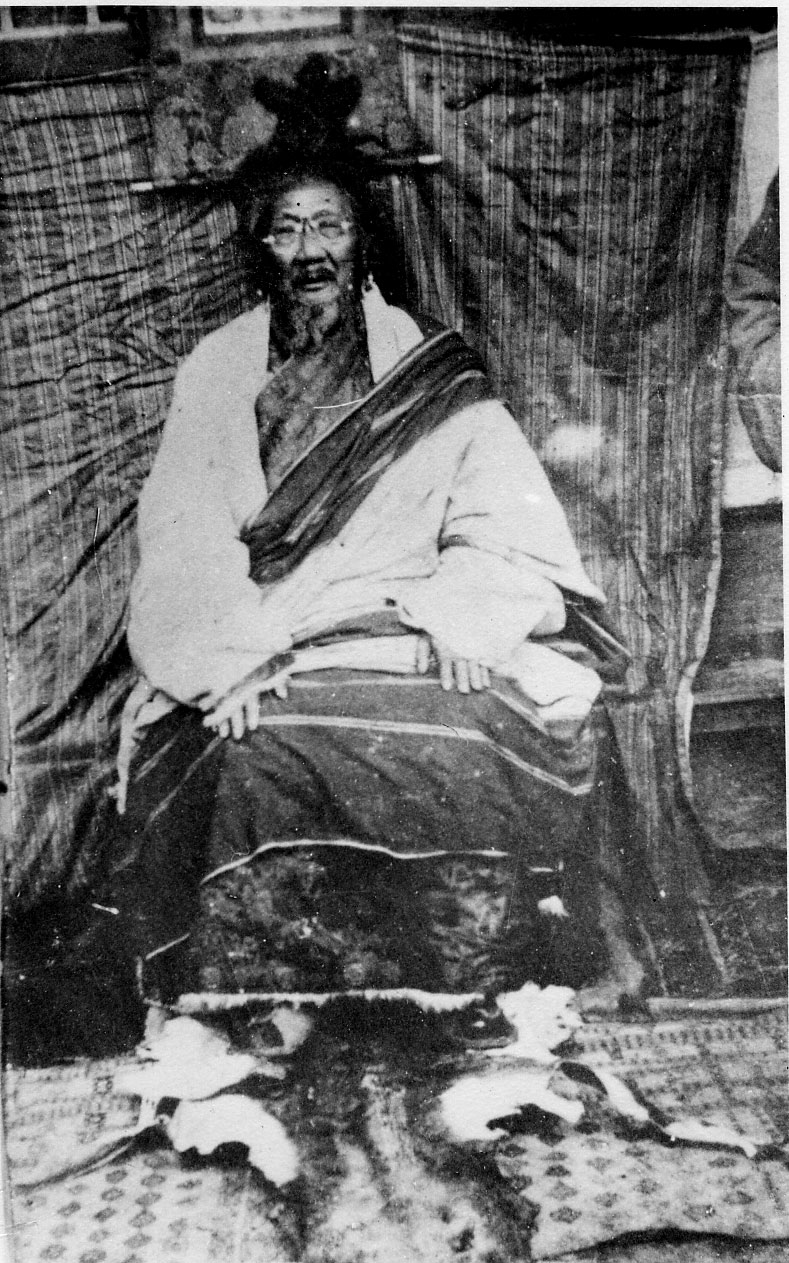
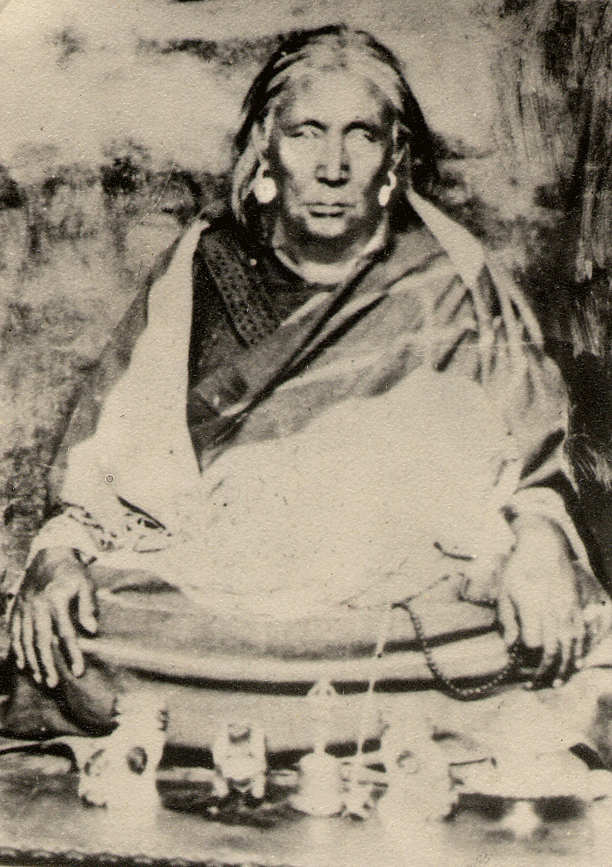
Shakyashri, shown in both photos, was a great master of Padma Karpo's Drukpa Kagyu lineage; these were some of the more recent lineage
forefathers from a vanished era who inspire folks even to this day.
My first teacher, Lama Sherab Gyaltsen Amipa, was a wonderful Sakya master living in Rikon, Switzerland. At that time, only four lamas were
registered as living in Europe. He increased my faith in the dharma.
On a walk near Tibet Institut one day Lama Sherab Gyaltsen kidded around with me.
"You have big eyes. You know in Tibet we have a saying. 'Big eyes, little wisdom.'"
We both laughed out loud at this. Then, not wanting to let him get away with this, I quipped back, "This may be true, but I
like to think of it like this, 'Big eyes,
much compassion!'" Shortly thereafter, Lama Sherab said that he felt one day I would
teach the dharma. At the time I was moved by this comment but unsure whether it was something I even wanted to do.
A short time later I sent him some cassette tapes of Michael Bloomfield and Al Kooper playing the blues, Terry Reid singing
July and Mayfly and some violin concertos. I was just a kid who was basically exploring things and trying to share some of the items I valued in my culture
with someone in return for sharing with me the jewels of his.
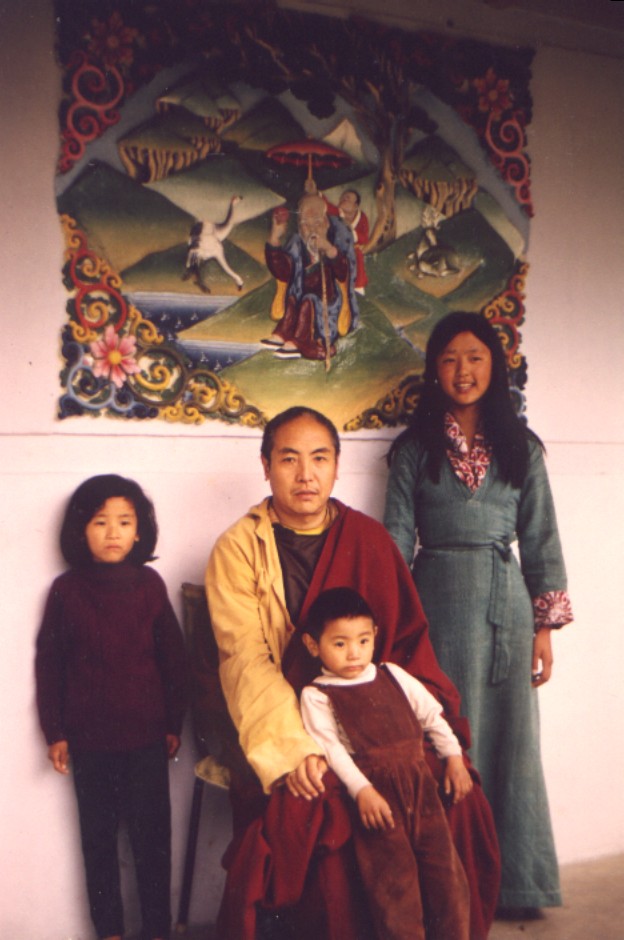
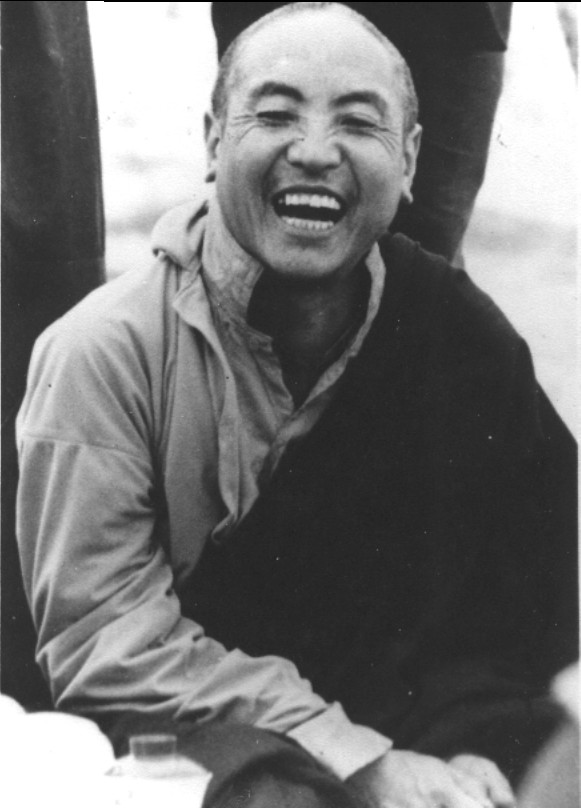
Apo Rinpoche I just missed meeting him. He passed away in 1974. The kindness of his wife, children, successor, and students
were beyond measure and have made me feel very close and thankful to him over the years. (Pictures courtesy of Yeshe)
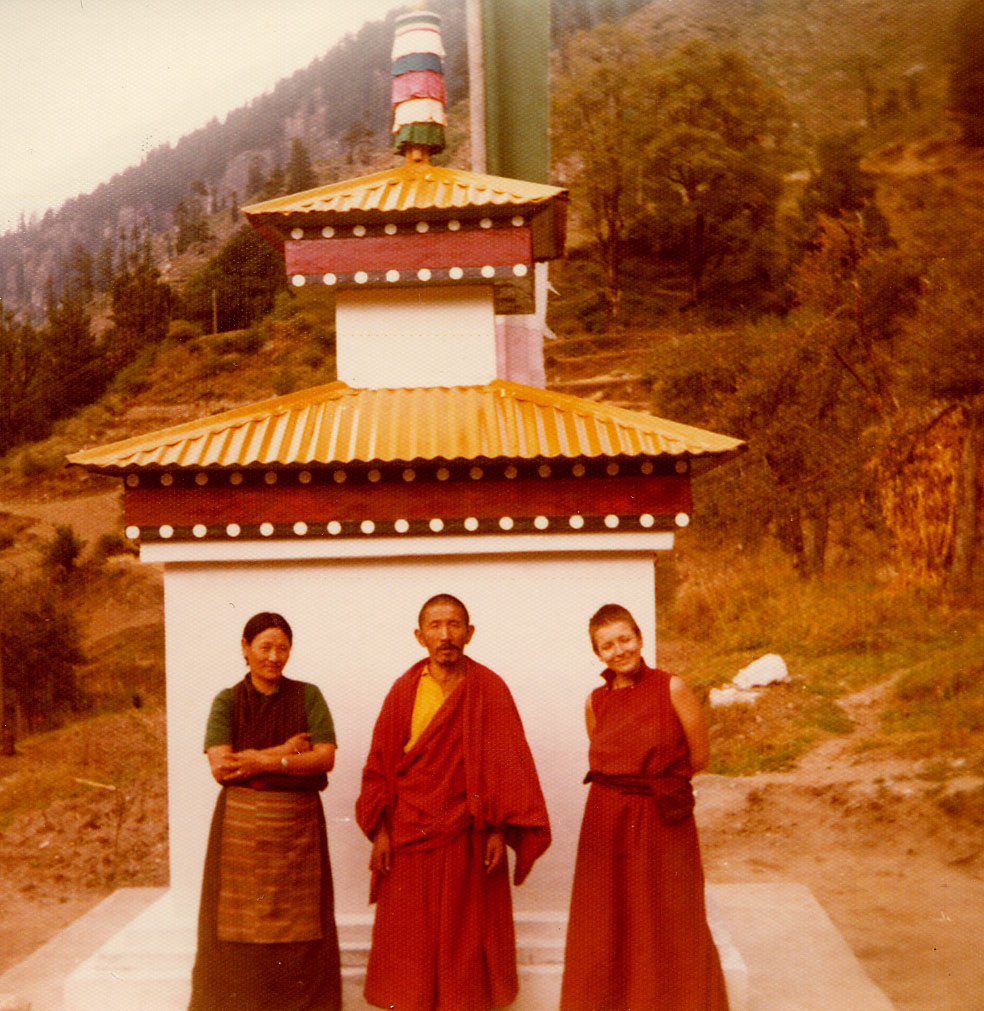
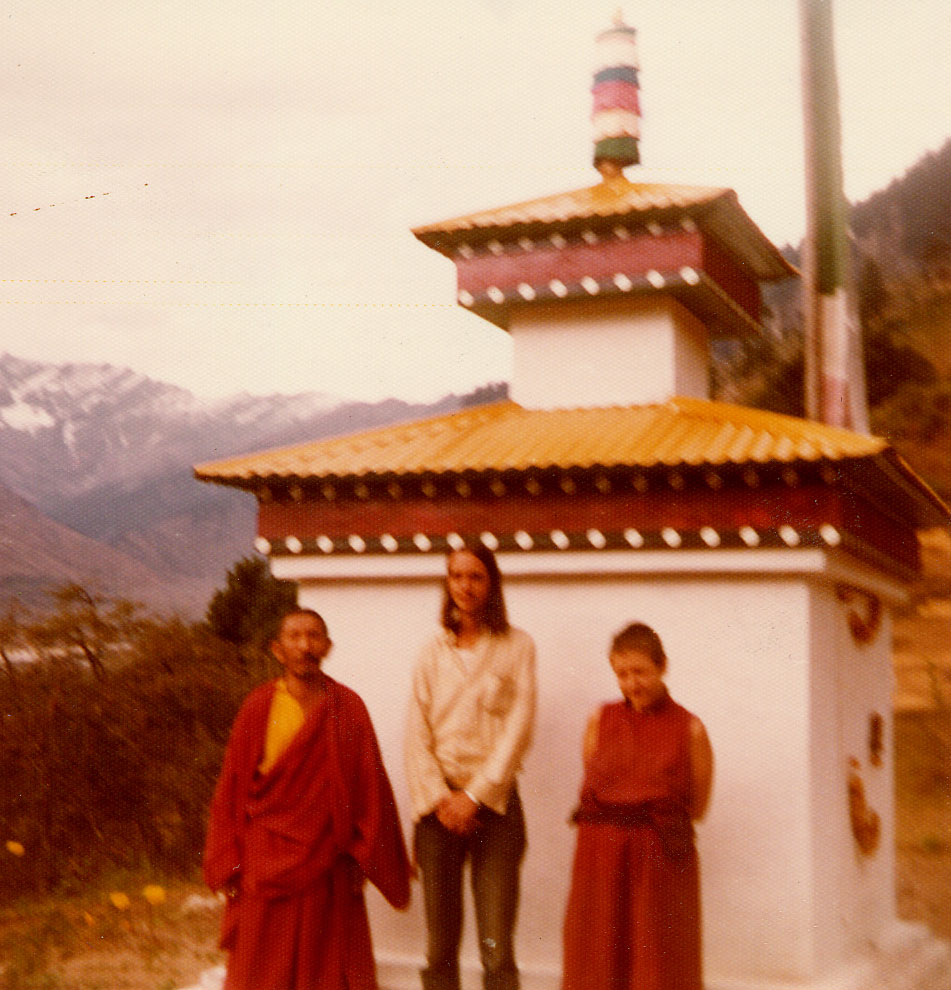
Amila Urgyen Chödon, Geagen Khyentse, Ani-la, and me, in September, 1974, at the Apo Rinpoche stupa at the Gompa in Manali, Himachal Pradesh, India.
On November 27, 1976, Amila wrote to me: "Practice the dharma as much as you can for the benefit
of all beings. Though you are young now, life is quickly passing and the time of death uncertain. So it is very important to
practice now while alive in this body." She was one of the great lay and mountain yoginis of our time.
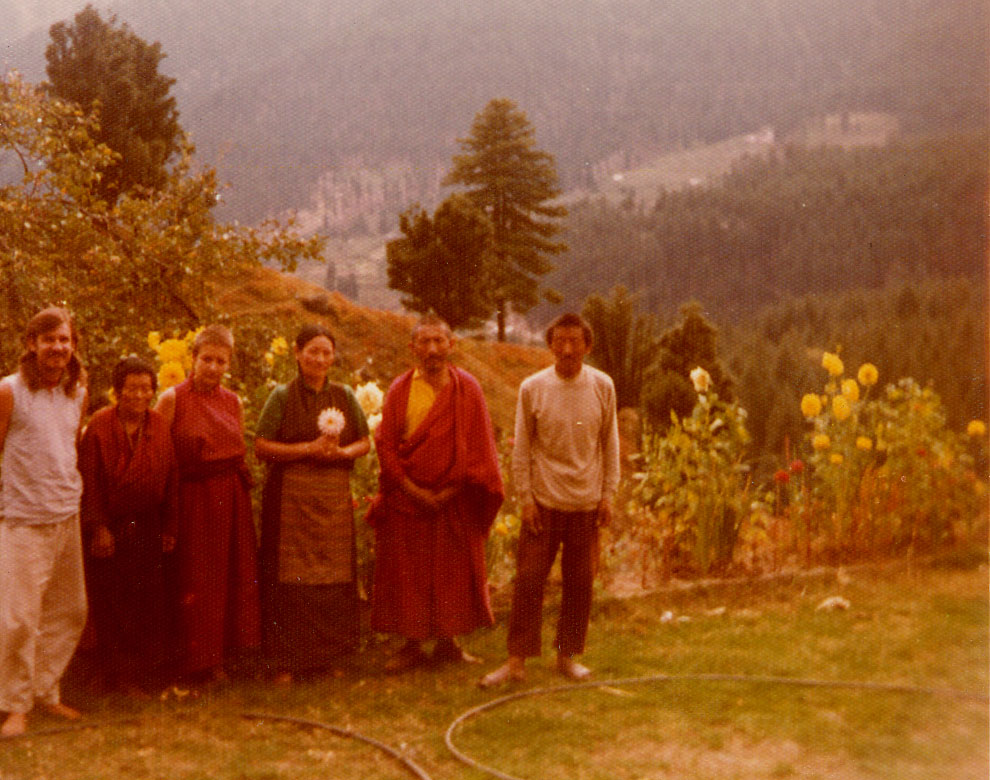
Some more of the folks at Manali Gompa in 1974. At this time I also met other Western students including Yeshe Dorje, Jocelyn S.,
Shakya Dorje, "New Zealand" Dave, Ani Jimba, Ani Lodro Palmo, and Ani Tenzin Palmo.
I am most grateful to Yeshe who served as a "spiritual friend" for me over the years, particularly while I wrestled with considerable doubt
about the "foreign cultural" aspects of some of the
teachings and practices.
We rekindled our friendship in Summer, 2003, and hung prayer flags together at his high altitude
Rocky Mountain hermitage. Over the years, I have often relied on his kindness as a role model for the meaning of "spiritual friend" at MMC.
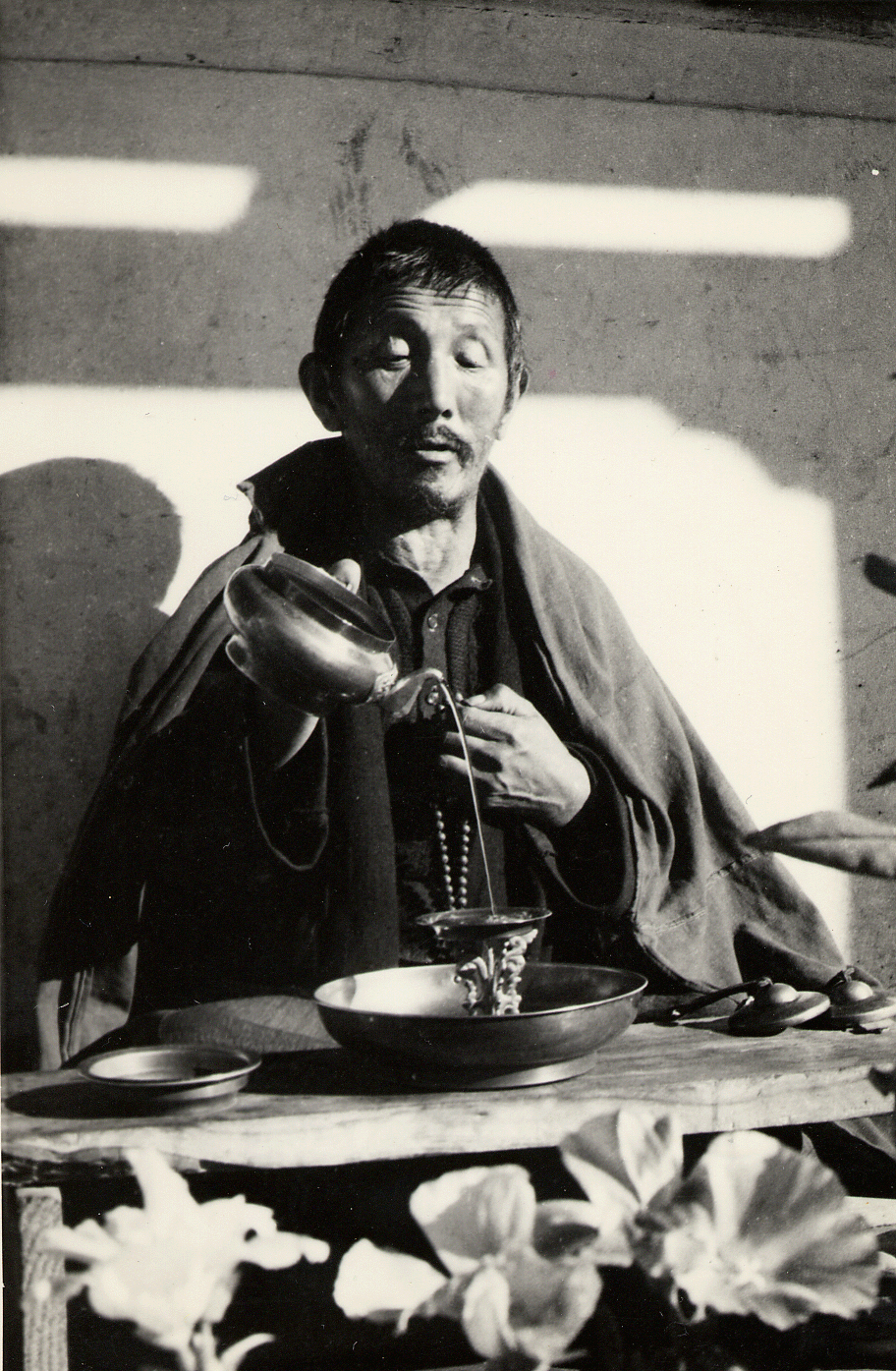
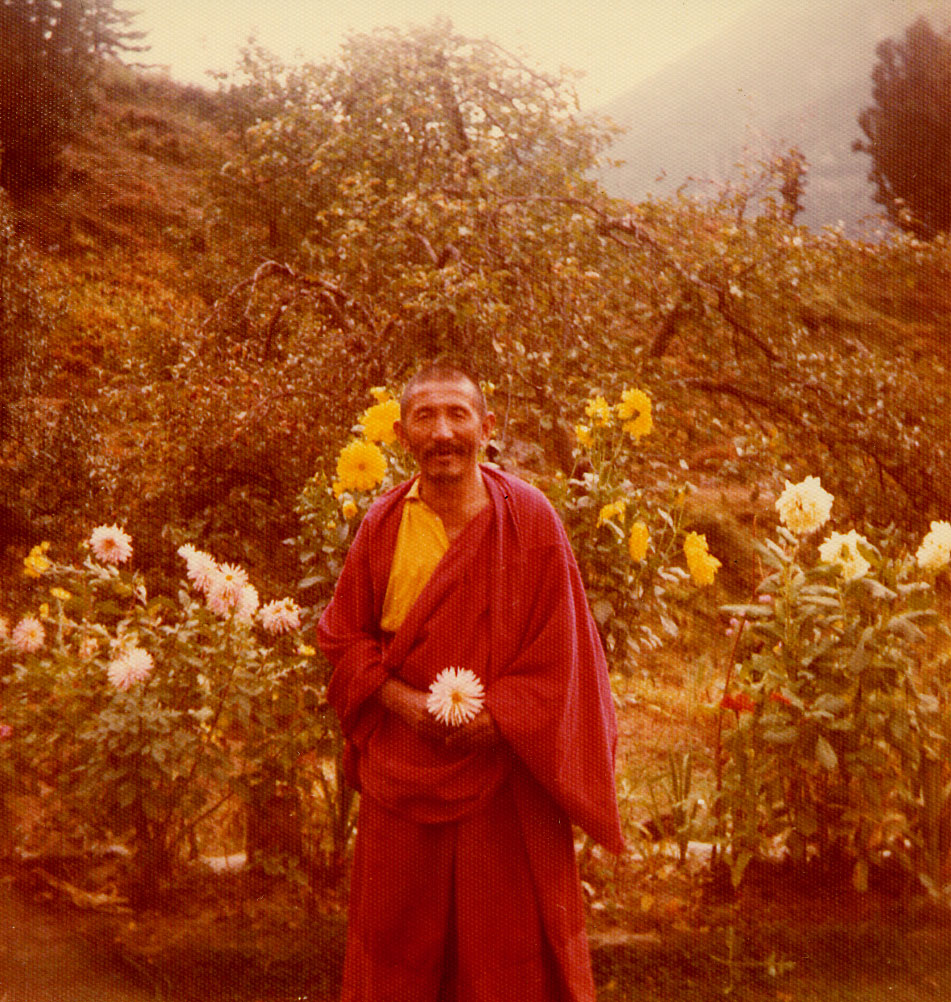
Geagen Khyentse First saw him as he came down the stairs with a toothless smile. In meeting with him my first question was "Aren't all beings really Buddhas?"
His reply, "You think you are a Buddha!" was accompanied by loud laughter by both him and my translator. (After leaving home at the age of 18 and going all the way to India to study mahamudra the least I expected was a cigar!)
Actually a really humble and fine teacher, renowned for his mastery of mahamudra.
A few years later Amila wrote to me, "Geagen Khyentse has gone to Ladakh, where he will spend the winter
teaching Rinpoche's disciples there. He will stay mostly
at Gotsang Ritröd, the isolated hermitage above Hemis Gompa where the monks do 3 year Naro-Chö-Druk retreat and
where Apo Rinpoche and the children and I lived for 3 years - just like the caves and hermitages in Tibet!" What an amazing dharma family and sangha this must have been. I am sure that the benefit of these efforts
extend to their descendents.
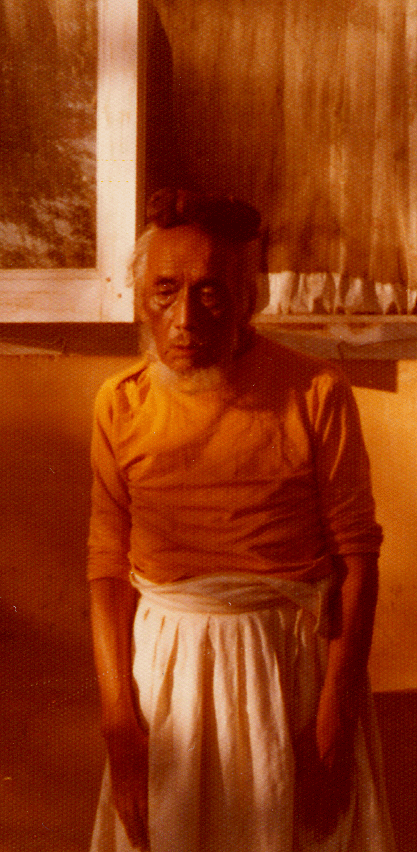
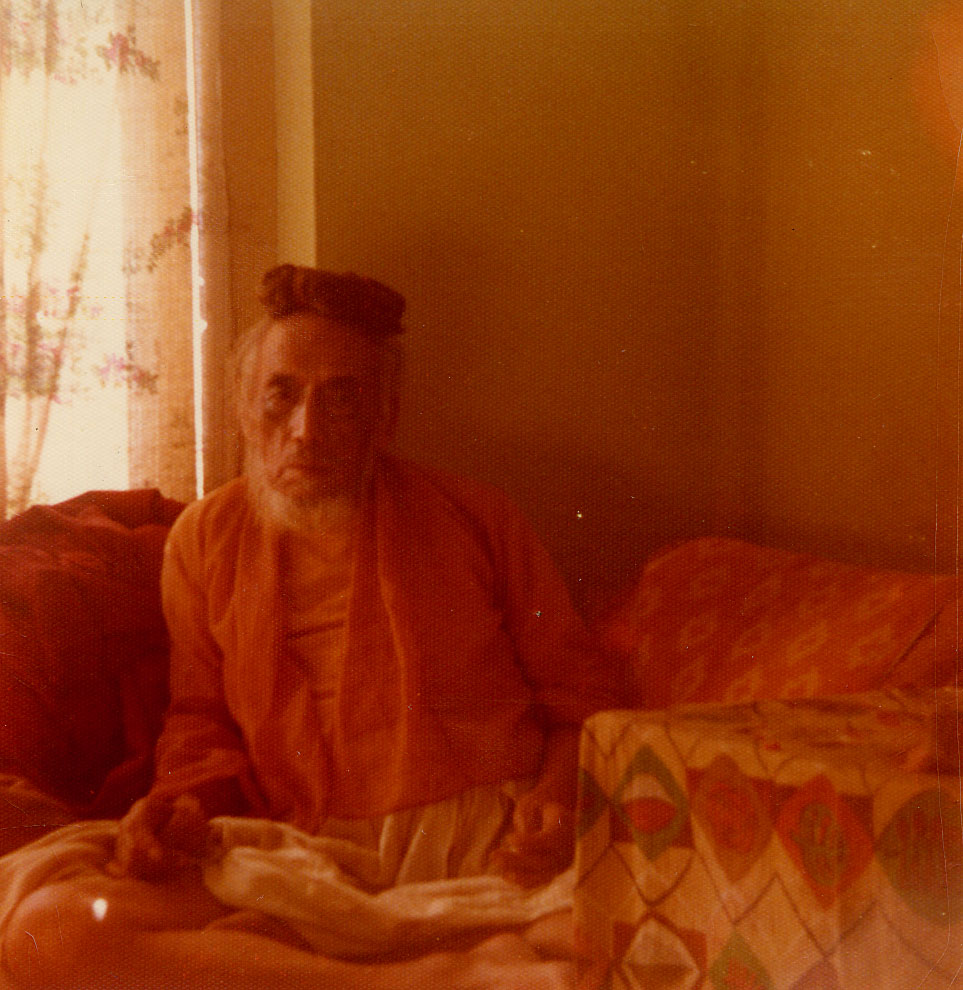
Togden Rinpoche The head of the Togden yogis. A generous yet demanding and kind teacher. A treasure of the lineage who provided
some of the most precise practice instructions I have ever encountered. When I was still exploring the
whole Tibetan yogi siddhi question, I asked him, "Do you know my mind?" He just laughed and without hesitation said, "Yes."
(At that point I tried to abandon my obsession with learning how to visualize by using a picture of Marilyn Monroe!)
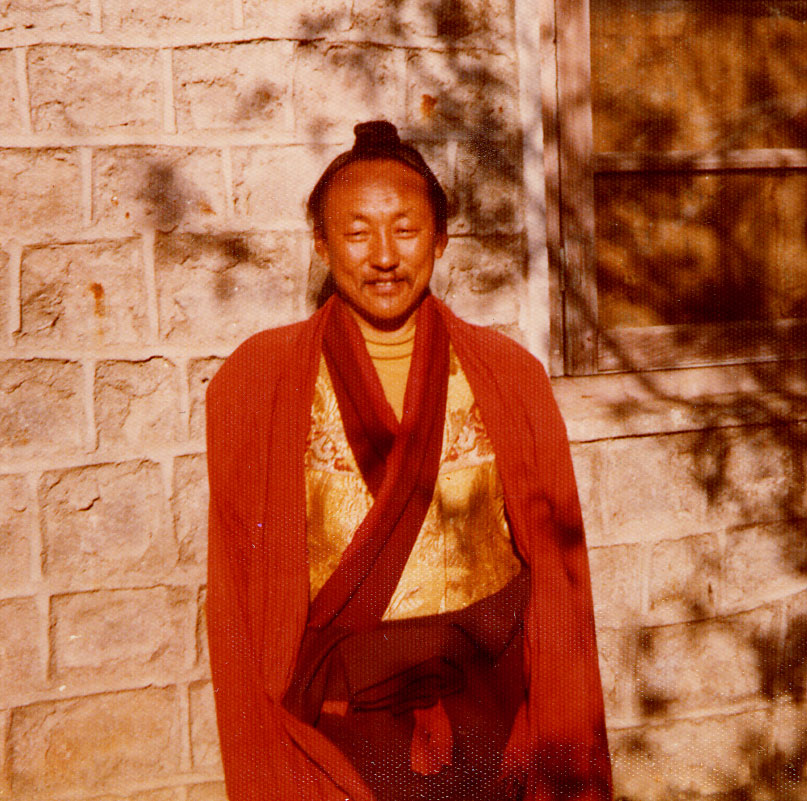
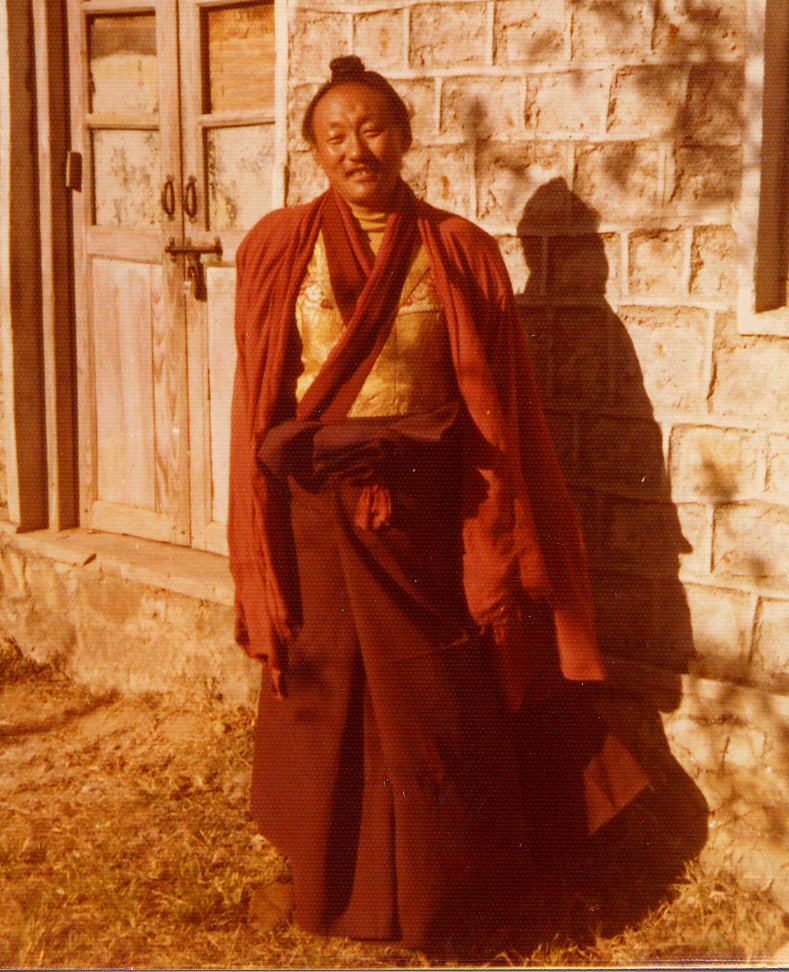
Chagdud Tulku I was one of the first Westerners he asked about the West. He came to the West in spite of meeting me.
Years later, I introduced my family to him in Oregon and then in San Francisco, I
gave him the only picture ever taken of him together with his first wife and kids (a fact his daughter Dawa explained to me
when I bumped in to her in Calistoga one day.) To everyone's joy, after many years of separation, Dawa and Chagdud Tulku were able to reunite again.
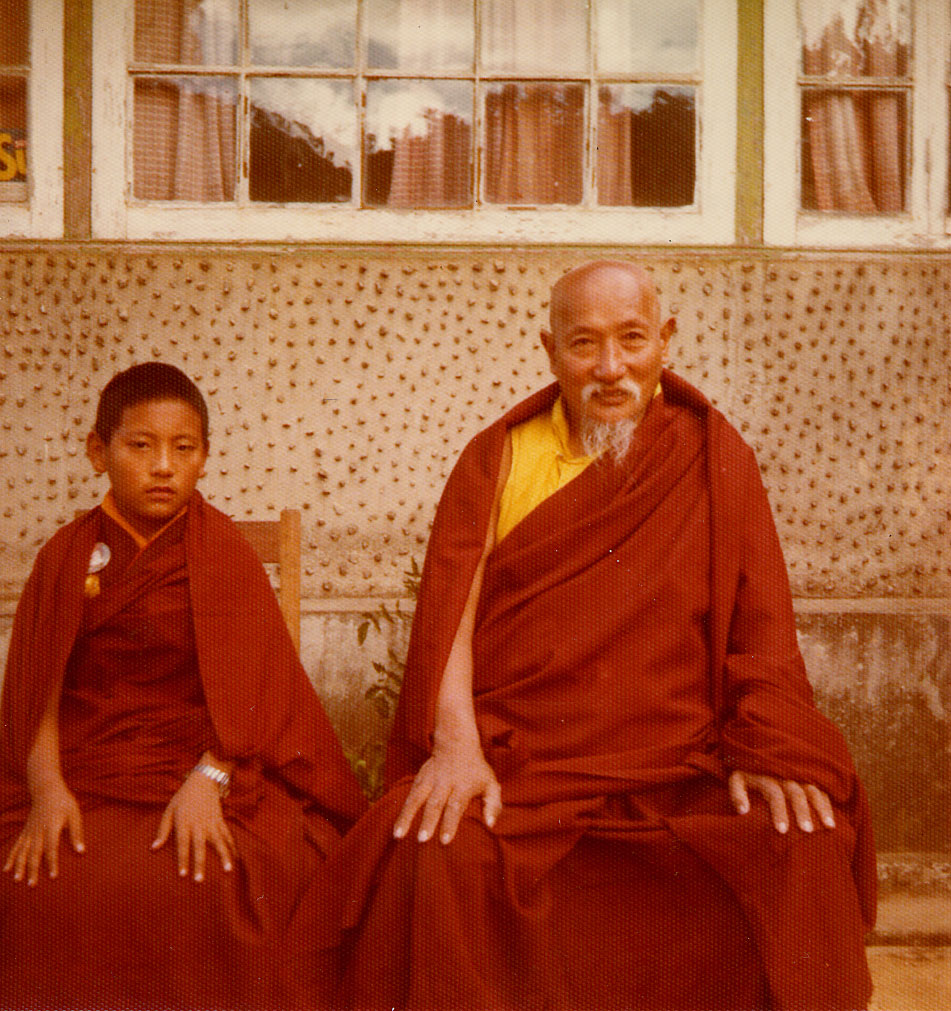
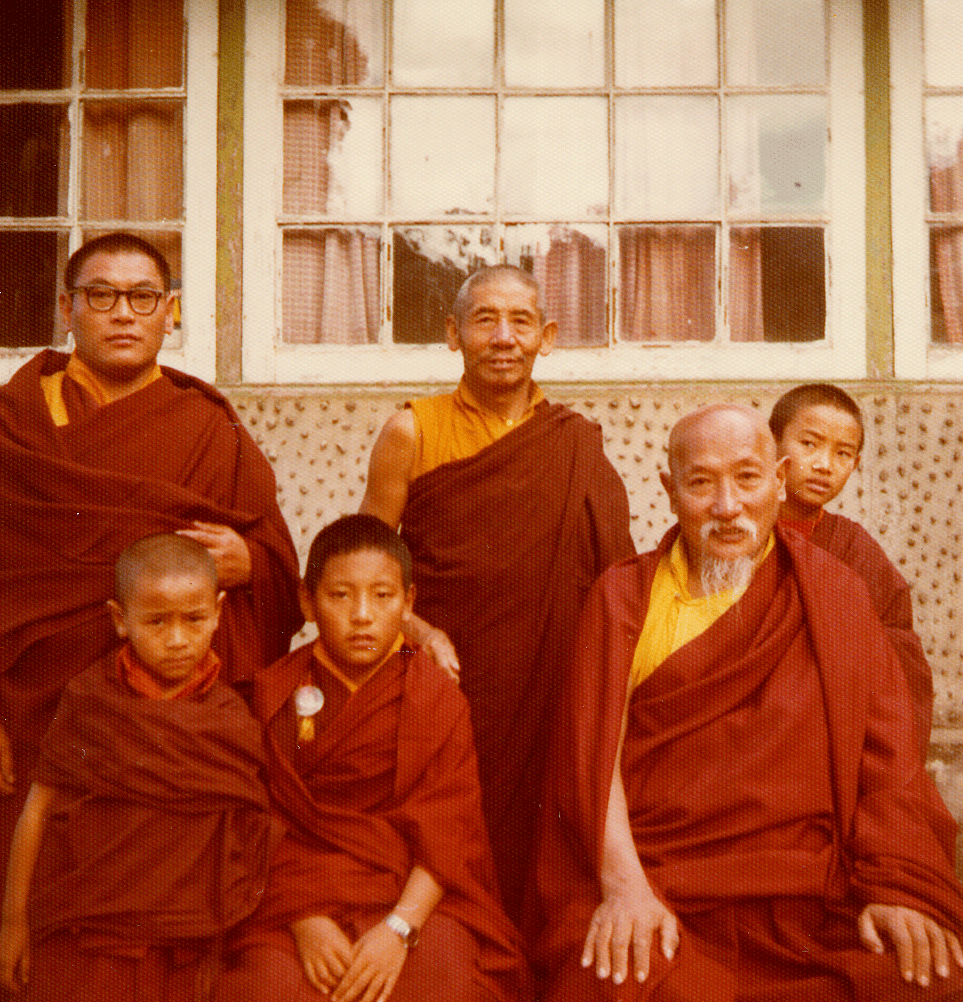
Dukchen Thuksay Rinpoche, Drukchen Rinpoche, Sey Rinpoches, and Drukpa Khenpos. Geagen sent me across India to meet
and study with Dukchen Thuksay Rinpoche and, when I arrived, I received the warmest greeting I have
ever received from anyone in my life. I received extensive teachings from him in Darjeeling,
and he invited me to stay even though I had nothing left to offer him, other than my heart and a pack of incense -- which I promptly broke while climbing into a truck
while hitchhiking on the way up to the gompa. I gave it him anyway, and he looked at me with more sympathy that day than any I could remember! To my surprise, years later a book came out which captures the flavor of
his presence and teachings. If you want an inkling of what this was like,
see The Words of My Perfect Teacher by Patrül Rinpoche.
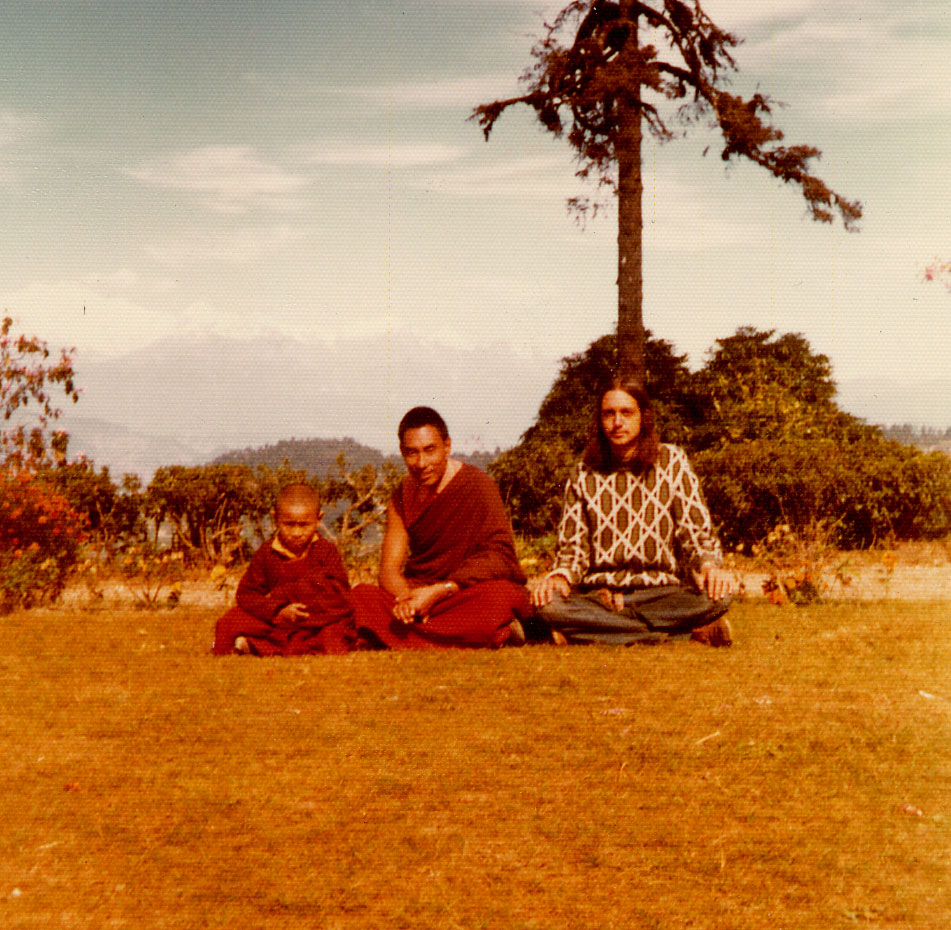
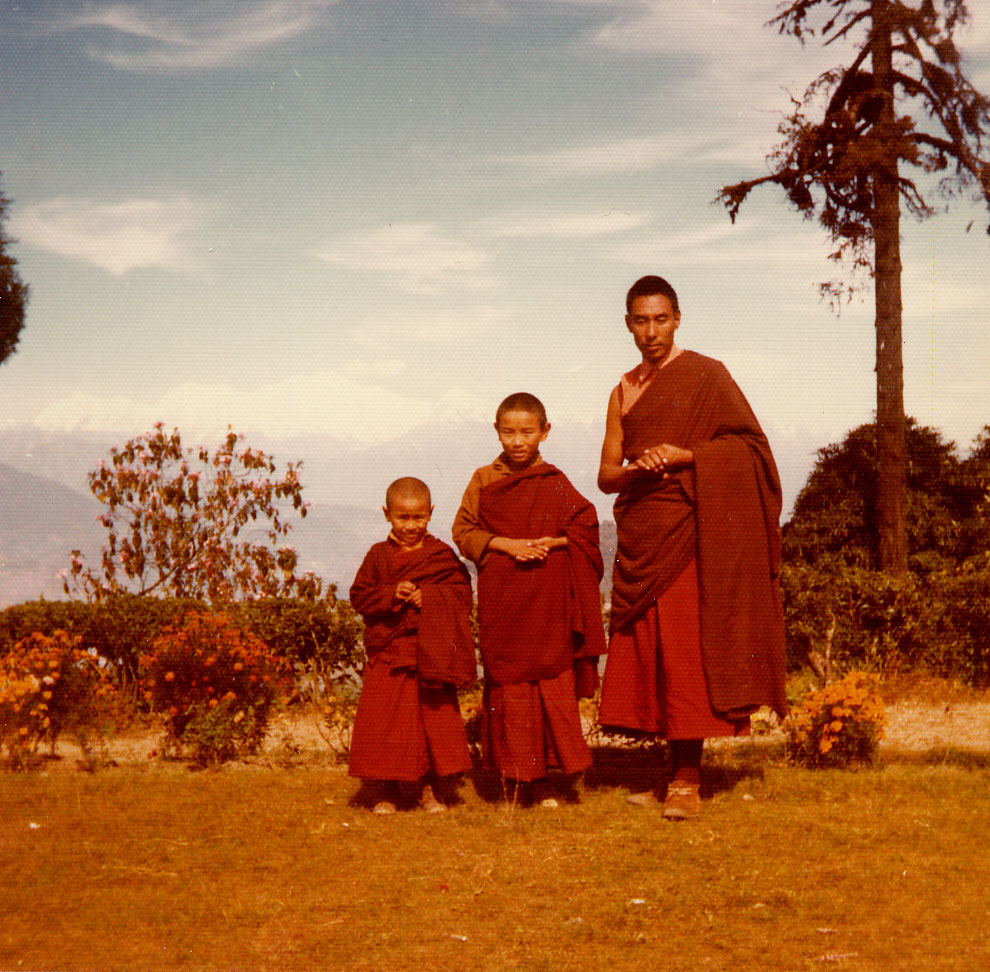
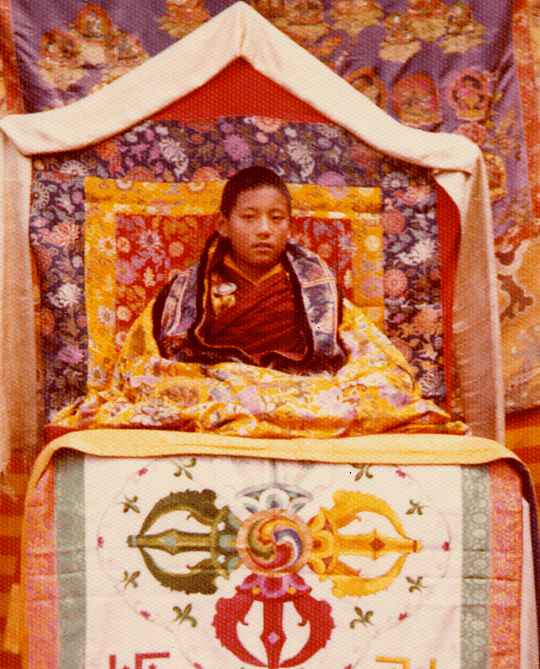
Apo Rinpoche's sons with their tutor and yours truly. These were the best kids I ever met and an inspiration to me to have kids of my own one day.
I used to hang around with them after morning teachings from Thuksay Rinpoche. I had the opportunity to meet Drukchen Rinpoche years later in
California where he gave an inspired talk about how hard we all work just to afford a box. "Really, our house is just a box." I enjoyed meeting him
again and also his father (for the first time), who touched my heart deeply. Back in 1974, the main thing I remember was getting bitten in the wrist by
the pet monkey he had at the time!
Upon leaving India, in my naiveté, I asked Thuksay Rinpoche if I may teach any of the dharma I had learned upon my return to the West,
to which he immediately and warmly replied, "As long as there is one person interested in the dharma, you should teach!" I understood this to mean that one of the basic dharma activities
of every Buddhist is to spread the seeds of happiness and hence to also teach dharma, so of course one should do so when the opportunity presents itself. Indeed, teaching is just one of the
ten basic dharma activities of any Buddhist and it is wonderful for anyone to have the opportunity to do so should it genuinely arise.
One day in Sarnath and Varanasi, on the Ganges, and the next day back in Germany. Unable to find work, the only thing left to do was a bit of retreat. Letters from Amila, Thuksay Rinpoche, Geagen, and
Yeshe Dorje,
who was living in the caves of Padmasambhava, sustained my efforts.
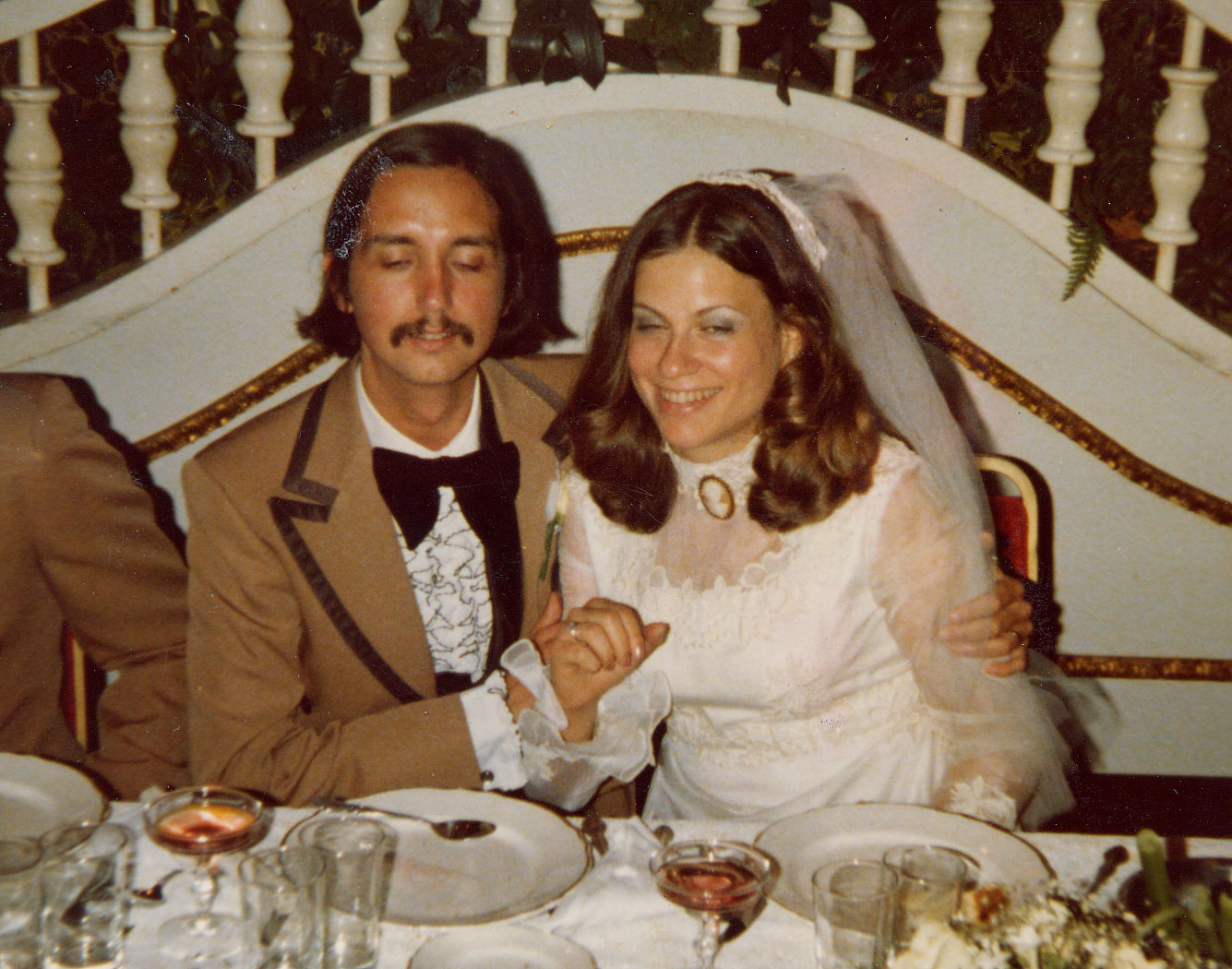
Off to study physics in an upstate New York State college. I struck gold when I met Ilene.
I call this "The Worst Photo" of the "Best Day of My Life."
...I'm glad we had pictures so we could both remember being there and actually getting married!
Now, after more than 25 years of marriage, I still am in awe of how Ilene continues to manifest so much more kindness and compassion than I can, and
hence, she serves as a continual source of inspiration. "It is said that
compassion is the only true sign of a successful mahamudra practioner."
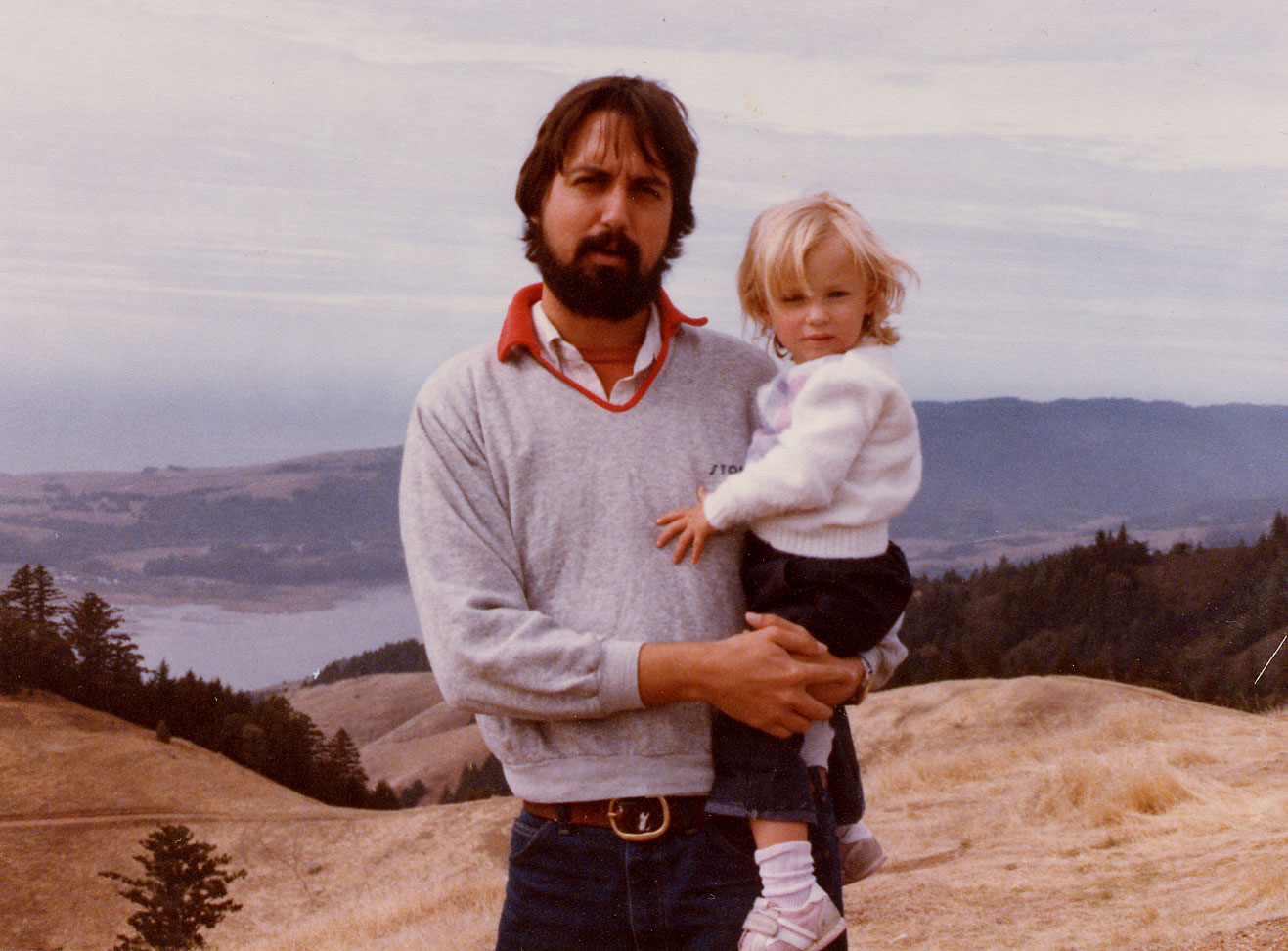
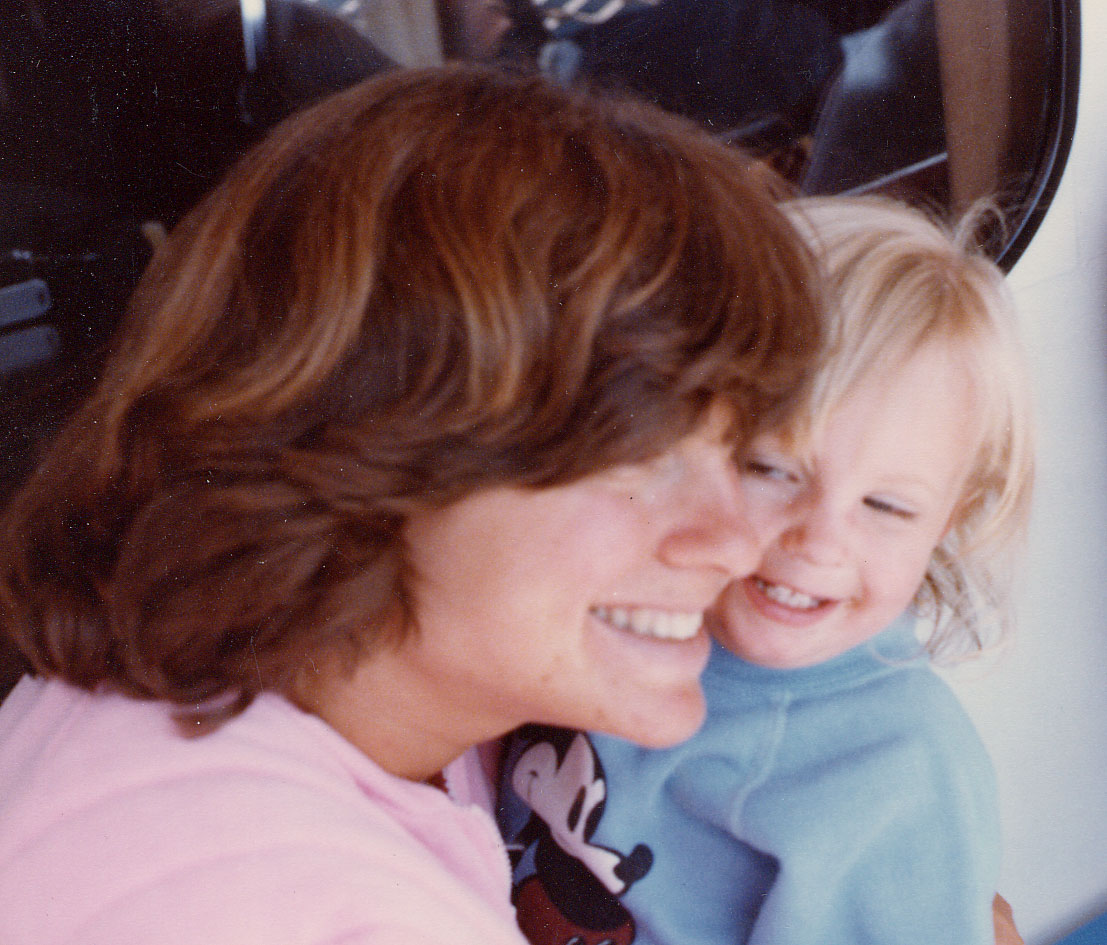
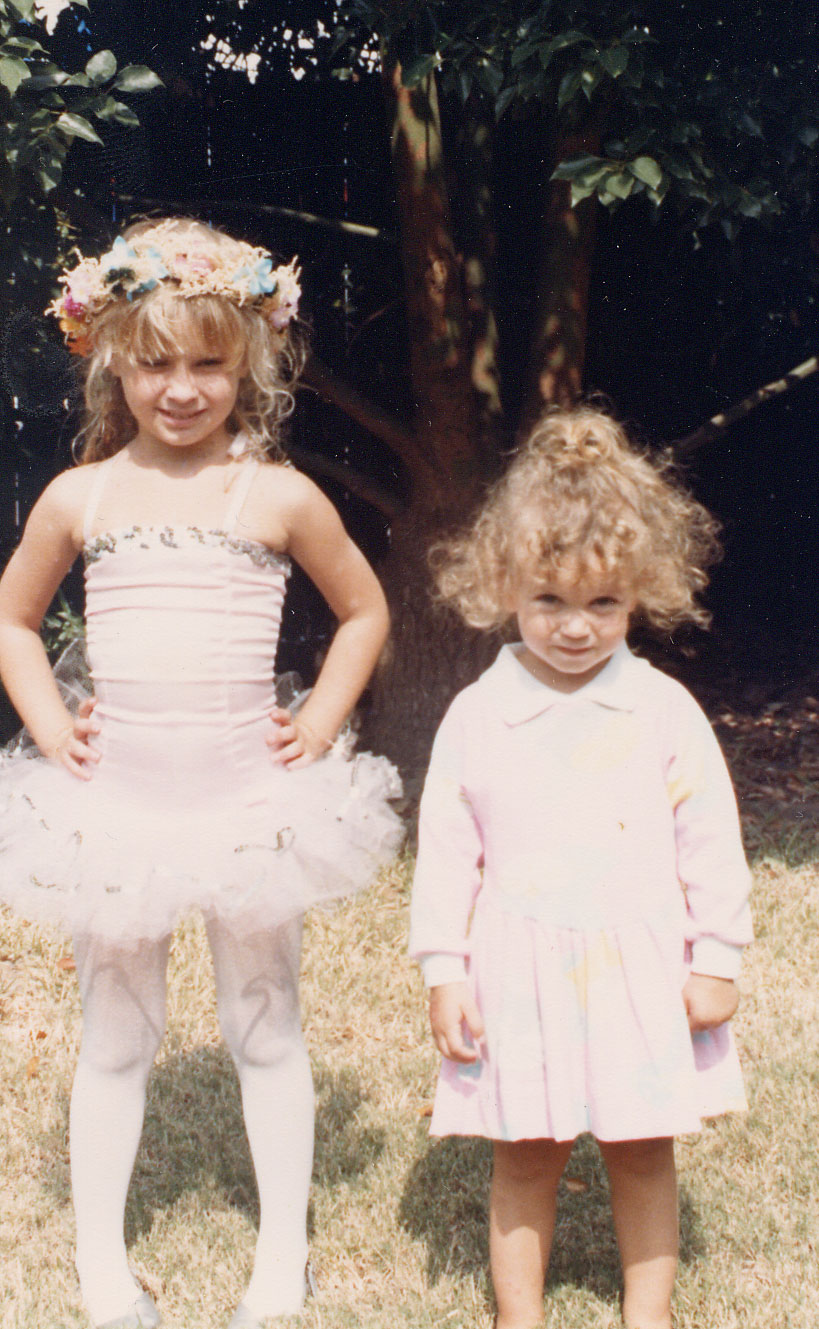
Holly and Rachel. Holly arrived face-up, with blue eyes wide-open and staring at me and the world after 30 hours of labor.
Rachel came a little over two years later, after only 25 minutes of labor. The admitting nurse and I had to deliver her in a room adjacent to
the admitting room. Both true angels descended upon this earth...and both now attending UC Berkeley...yes, let us please remember, how time flies!
After meeting in college, Ilene and I moved out to San Francisco, in part so I could study under Tarthang Tulku and the Nyingma Institute. This was my core
study and practice from 1977-1987 while I worked for British Petroleum and moved around between San Francisco, Anchorage, and Houston. At the Nyingma Institute, I had the opportunity to meet
Lama Govinda, Herbert Guenther, and John Blofeld. Tarthang Tulku Rinpoche invited me to teach at the Institute in 1979 but I preferred to remain a student.
In 1980, I worked on the stupa art for Odiyan and gave a talk at the dedication of the large stupa there. That year, I also
received Dzogchen teachings from H.H. Dudjom Rinpoche, head of the Nyingmapa. From retreats at the mountain-based Nyingma center Nyima Dzong
in Southern France in the early 70's and meetings with Kangyur Rinpoche in Darjeeling,
to teachings by Tsoktsey Rinpoche and Namkhai Norbu in the 90's,
the blessings of this teachers' activities were evident at every corner. I am glad I met him. In between, during the 80's, like many other Westerners,
I also attended mahamudra teachings and empowerments by
Kalu Rinpoche and H.H. The 16th Karmapa.
Over this time, I also had the opportunity to attend two sesshins with Katagiri Roshi, one in Vermont and one in Alaska.
For three years I was an active member of a Zen center associated with the lineage of Suzuki Roshi,
serving regularly as part-time Tenzo (head cook) and Board secretary, even giving an occasional student dharma talk.
I subsequently received formal Soto Zen vows, Juikai, and
received a Raksu and lineage papers. During this time, I attended over 100 talks and Saturday sittings with
the head Roshi and helped to host visits by Suzuki Roshi's son, Hoitsu Roshi, the Chan Master Shen-Yen, the Korean Zen Master Seung Sahn and Chagdud Tulku, among other teachers.
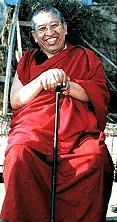
One day at the Zen center, I happened across a flier for an upcoming mahamudra retreat with a teacher named Thrangu Rinpoche
on the topic Moonbeams of Mahamudra. This extensive practice manual, also known as Mahamudra: The Quintessence of Mind and Meditation,
had been called
"the most important sacred text" by Thuksay Rinpoche, and had been published in English in 1986.
Upon attending this retreat in Lake Big Bear in the San Bernadino Mountains, I was deeply impressed at the depth of knowledge, the openness and accessibility, and
the genuine commitment to mahamudra exhibited by this kind master. In many respects, this was the most meaningful retreat of my life.
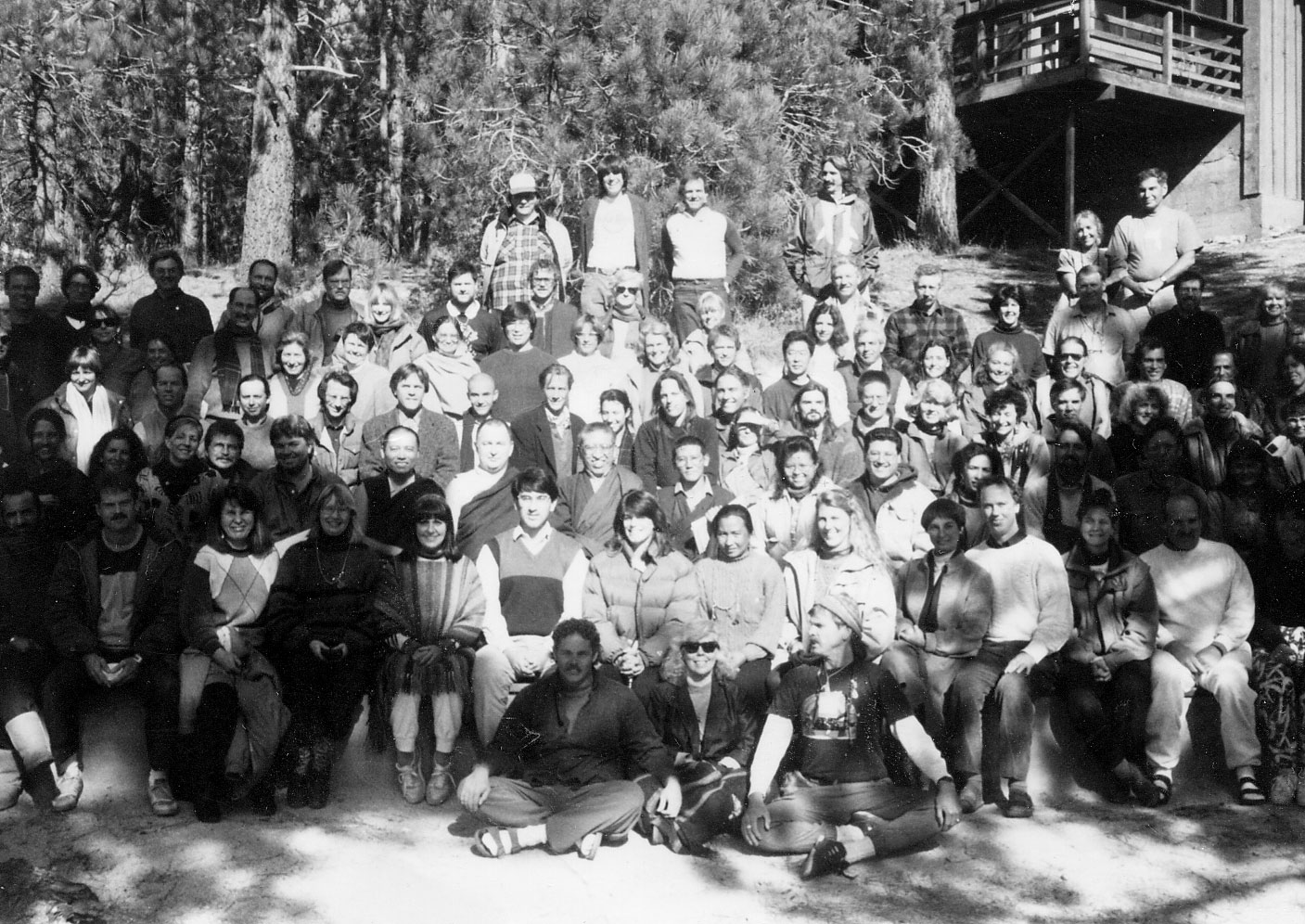 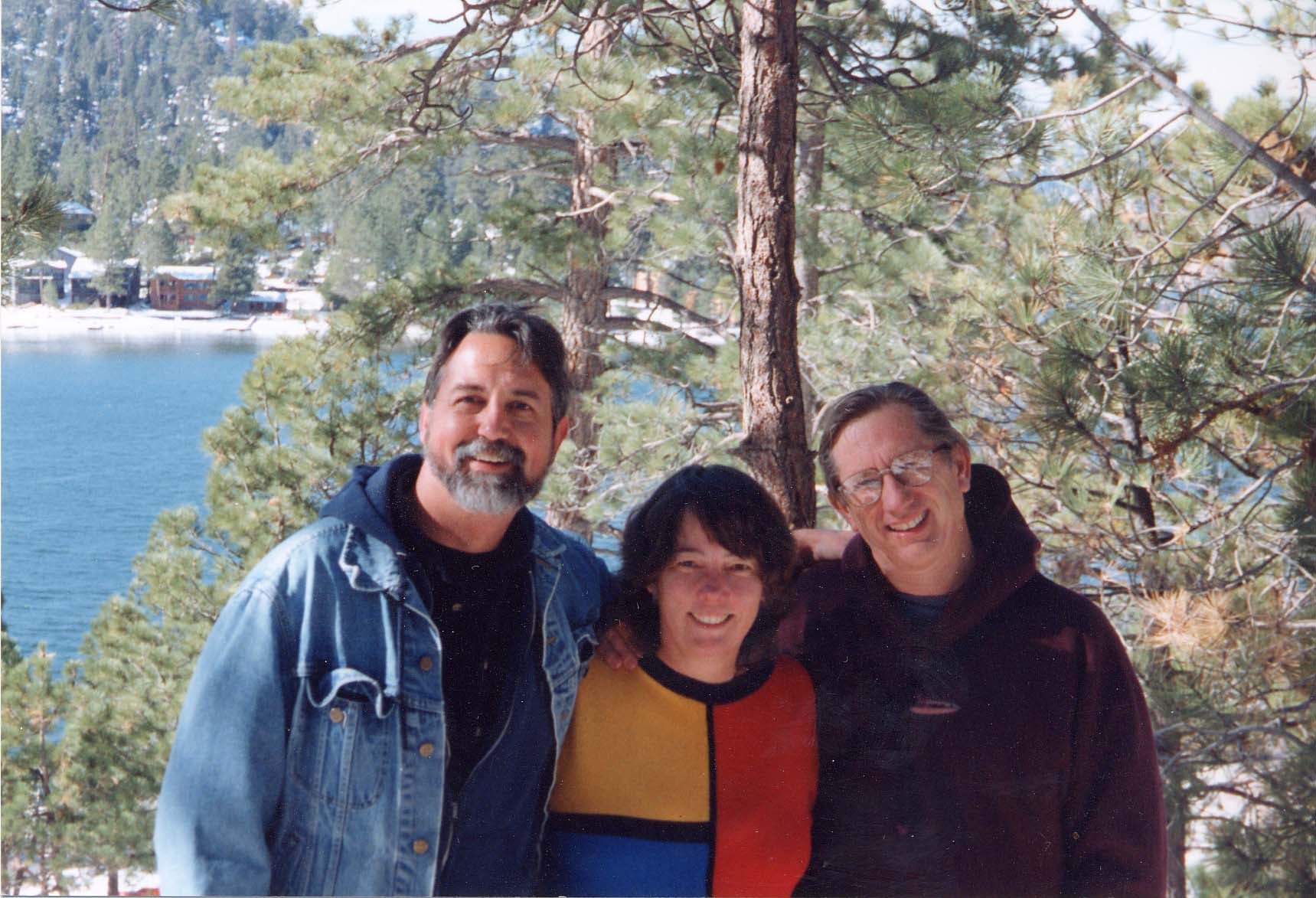
Lake Big Bear Mahamudra Retreats with Thrangu Rinpoche. Was this the year that at a Thanksgiving Dinner we all sang "Lama please don't go..." to Rinpoche (sung to the tune of "Baby Please Don't Go" by John Lee Hooker)?
I am grateful to the large hearts of Lee Miracle and the rest of Karma Mahasiddha Ling for their strong support to Rinpoche
and putting on what are now known as some of "the best retreats of the 20th Century." Rinpoche shares with me personally the importance of establishing a true practice of Mahamudra. "The most import thing is to put these teachings into practice."
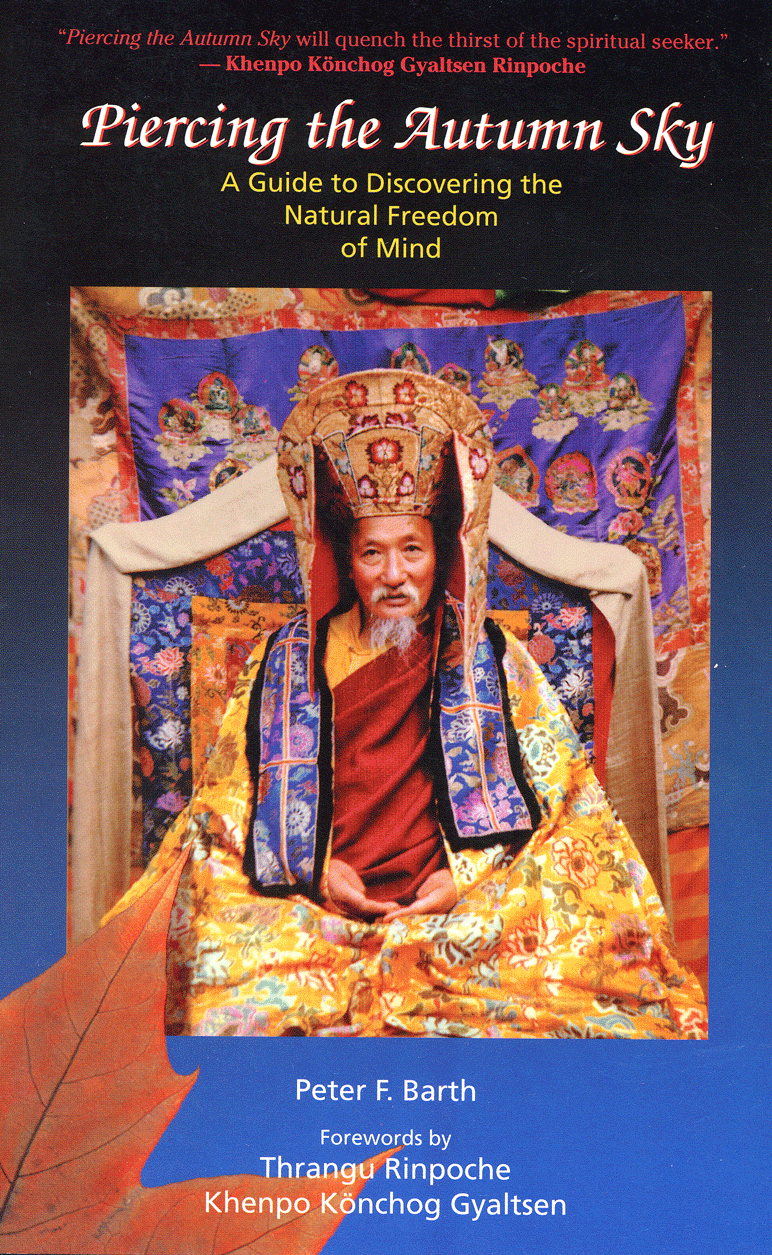
At Rinpoche's encouragement and under his guidance, I repeatedly take groups through cycles of mahamudra practice
based on his oral instructions and the teachings of Dakpo Tashi Namgyal and Wangchug Dorje.
In 1992, I wrote Piercing the Autumn Sky, which was considered to be one of the first books on
mahamudra by a Westerner and was subsequently published in Italy. This book was also endorsed by Khenpo Könchog Gyaltsen, a sincere and dedicated
teacher of the Drikung Kagyu.
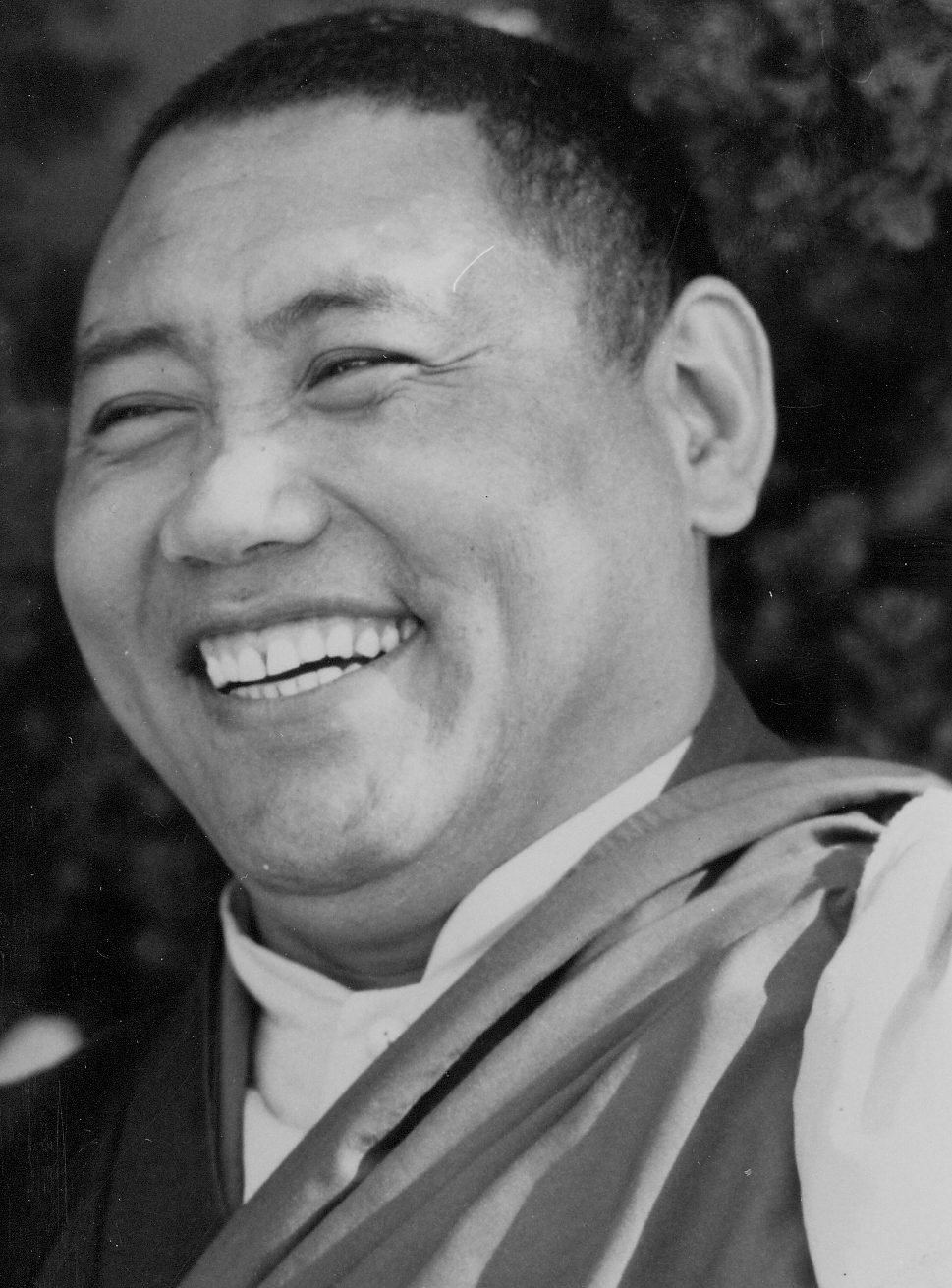
Over the years, Khenchen Könchog Gyaltsen Rinpoche provided an incredible array of teachings to all interested Center members,
always embodying bodhicitta and mahamudra. When I first met him,
I felt like I had met an older brother, a feeling which Khenpo said was "mutual." His kindness, wisdom and humor
are remarkable and he reminds me of the "old masters" raised in Tibet pre-1959. In addition, the Center
once had the opportunity to co-host Khenpo Tsultrim Gyatso who sang beautiful and inspirational
dohas through the night and provided meditation instruction to go with them.
Honestly, being a house-holder is never easy, a little like riding
a roller-coaster in the dark. Even today, when I observe the qualities of my thoughts, "the black pebbles stack up quickly, but the white pebbles are few
and far between." As part of Mahamudra Meditation Center, I continue to practice with a small circle of town yogis and, from time to time,
join in with a circle of mountain yogis or monastic yogis as well.
I feel fortunate that I have had a little glimpse of the dharma through these kind teachers, in general, and Khenchen Thrangu Rinpoche, in particular.
With encouragement, several of my students and long-term fellow dharma practitioners
have gone on to become dharma teachers and establish meditation centers, with the pure motivation of
preserving the lifeline of these vital teachings for the benefit of all.
Finally, the kindness of Rinpoche in opening up the door of mahamudra to West has truly been remarkable. He
has done this carefully and skilfully, in accordance with the wishes of H.H. Karmapa Rigpe Dorje.
In the process, he has increasingly grown to have
confidence in the sincerity of his Western students and as such has provided the heart of the teachings to them.
A fellow student, Clark Johnson, must be credited with supporting
Rinpoche early on and preserving so many of his teachings. Clark is fond of saying,
"Rinpoche gives the same instructions to Westerners as he does to Tibetans."
For someone interested in mahamudra for more than 30 years, I cannot tell you
what a contrast there now is in comparison to the early years. Now excellent translations of a wide array of root texts are available.
In addition, oral instructions of a master scholar-yogi raised in "Old Tibet" and who has most appropriately been called "A Lama of
the Lamas," have been systematically presented and preserved. I personally regard Khenchen Thrangu Rinpoche's work
as the most significant to hit the West since the dharma first emerged from Tibet.
For this, I am sincerely most grateful.
In conclusion, I would like to ask you to please forgive these self-indulgent ramblings which attempt, but seriously fail, to describe some moments of the dream of my life.
I do think the photos of teachers will be of interest and inspiration to some. I doubt
that otherwise this will be of much help to anyone, but provide it with the hope that it may do just that.
With best wishes -- Peter, December, 2003, Petaluma, California, U.S.A.
All color photgraphs and images are copyrighted by Mahamudra Meditation Center
or Lama Thapkhay except of those of Apo Rinpoche and Thrangu Rinpoche.
Return to
Main Menu
- MMC Page
|
|